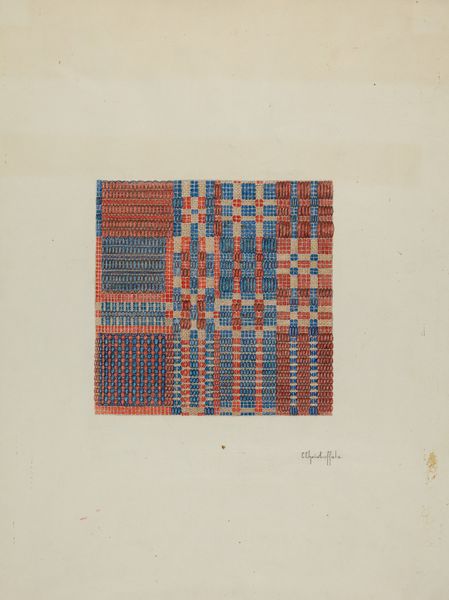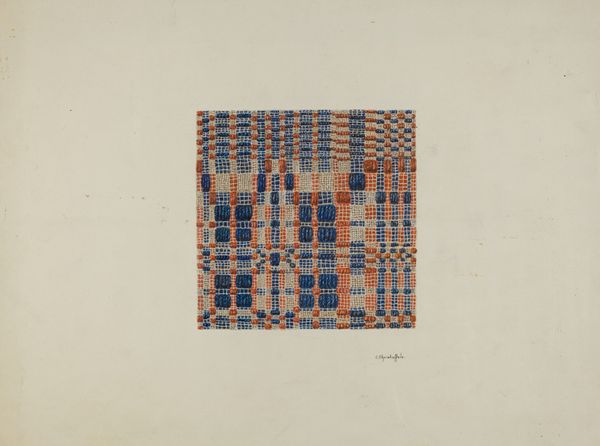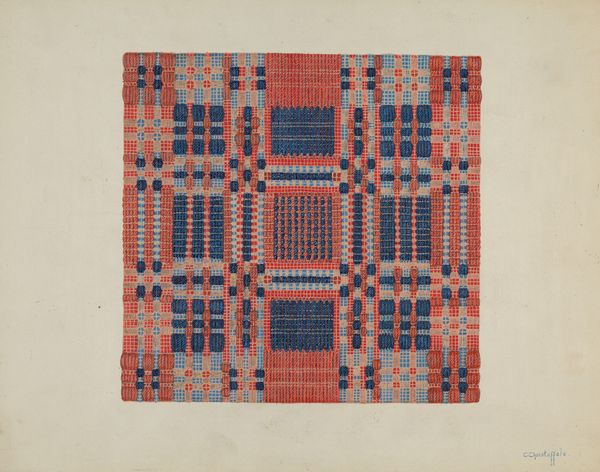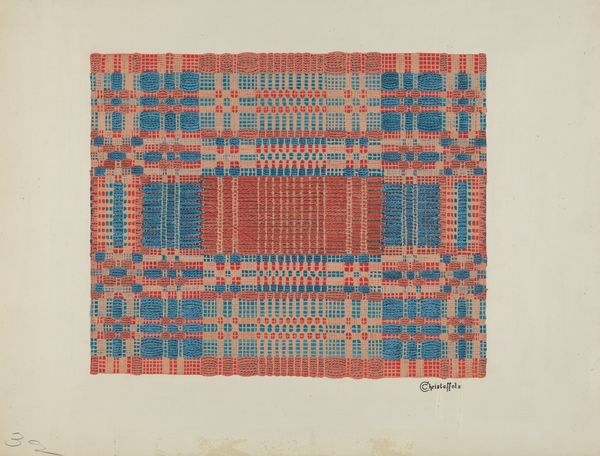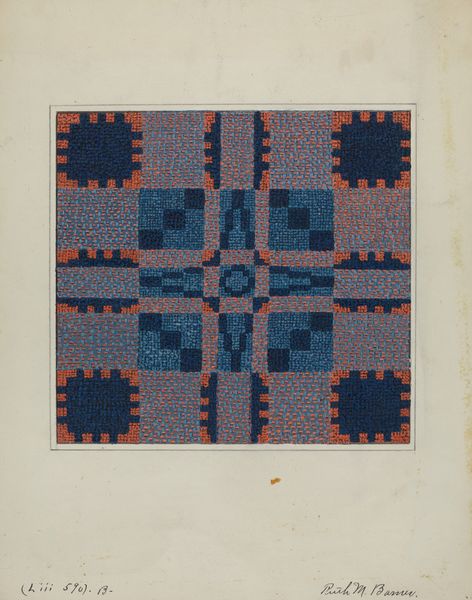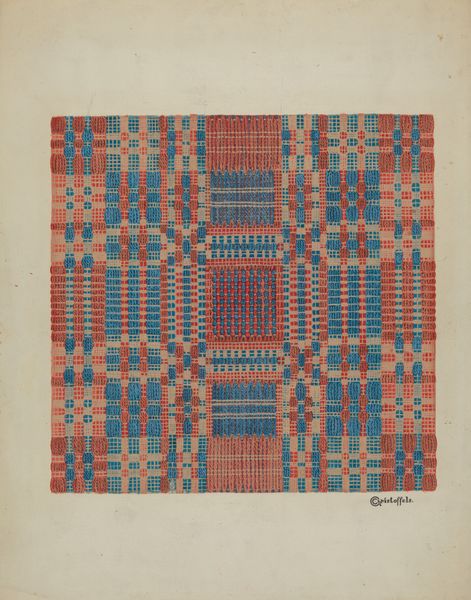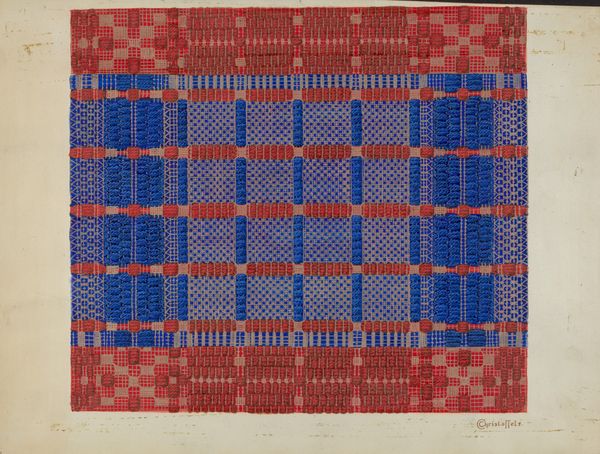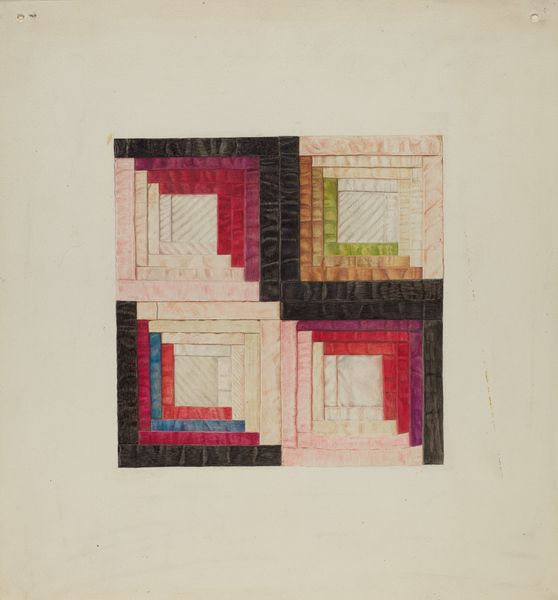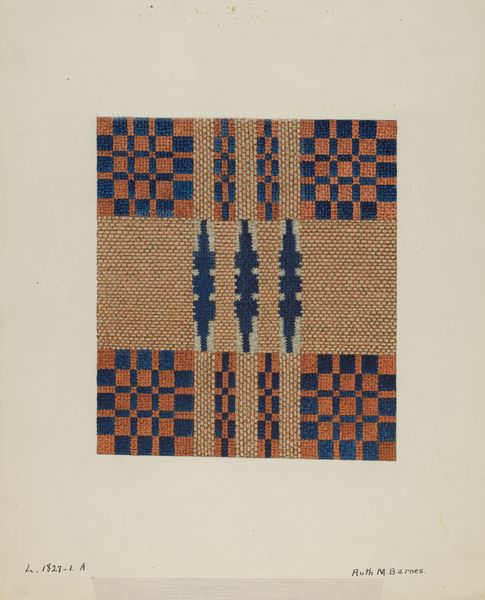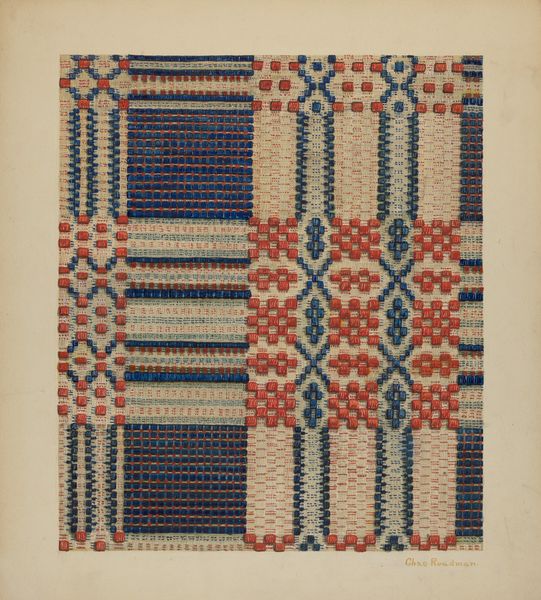
drawing, textile, watercolor
#
drawing
#
pattern
#
textile
#
watercolor
#
geometric
#
abstraction
#
watercolor
Dimensions: overall: 26.7 x 35.6 cm (10 1/2 x 14 in.) Original IAD Object: 72" wide, 96" long
Copyright: National Gallery of Art: CC0 1.0
Curator: We’re looking at “Coverlet Detail,” a textile and watercolor drawing by Cornelius Christoffels, dating to about 1940. Editor: It gives the immediate impression of being both intricate and somehow quite ordered. I notice a recurring, block-like pattern rendered in earthy reds and muted blues. The scale feels intimate. Curator: Exactly. The geometric repetition immediately grabs your attention, doesn't it? Notice how Christoffels organizes the composition through variations in pattern, almost as though he's exploring different weaving techniques within a single plane. It calls to mind structuralist examinations of sign systems, really. Editor: Right, but consider the process of weaving these coverlets – the labor, the skill passed down through generations, the specific types of looms utilized, not to mention the source of the dyes to get those exact shades of blue and red. How was it all made? Curator: Indeed. From a formalist point of view, though, the cool blue and warm red create a visual push and pull that’s vital to the piece's overall dynamism. It sets up this beautiful interplay, pushing the boundaries of geometric abstraction while still holding itself to that central square format. Editor: And understanding its materiality connects us with the women that crafted these utilitarian textiles within domestic economies. What was the availability of resources at the time it was made? What function was this piece originally supposed to serve, and for who? It might've even been the main purpose and form of creative expression for that artist! Curator: Interesting, yet its appeal goes beyond any individual historical function. By abstracting a common textile element, Christoffels brings us back to the fundamental principles of design: form, color, balance. The underlying structure supersedes cultural specifics. Editor: True, the clean lines offer a clear aesthetic quality to the observer. And yet I'm struck by the tension between art and labor, abstraction and lived experience embedded in the drawing's creation. It certainly prompts one to reconsider common approaches to domestic labor during this time. Curator: I suppose this piece then is one small invitation to rethink the relationship between structural forms and real-world applications. Editor: Right, an open dialogue about who decides the meaning behind everyday objects, really.
Comments
No comments
Be the first to comment and join the conversation on the ultimate creative platform.
